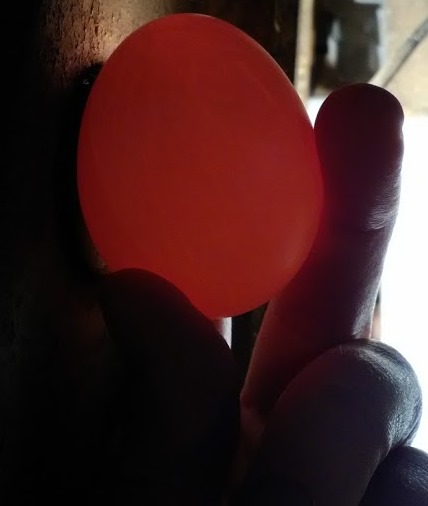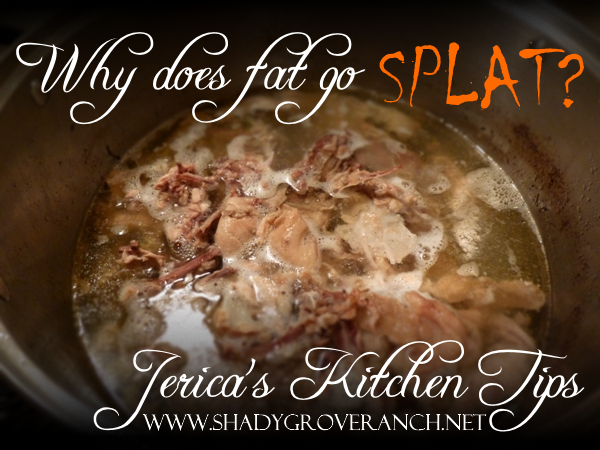Should you store farm eggs on the countertop?
You probably read the little article that circulated social media about how Europeans never store their eggs in the fridge. How convenient, right? More space for leftovers, potential for edible kitchen decor, and all those recipes that call for a room-temperature egg, you are now totally ready for!
But is room-temperature storage of eggs right for Americans, even those Americans that buy directly from a natural-practices farm like ours?
The European culture is just different. They are a market-centric culture, buying daily or at least a few times a week, whereas in the US, we tend to do things Sam’s-Club-Style. Everything in bulk. Fewer trips to the store. More storage space. Everything is big here. Really big.
In fact, many of us have jumbo refrigerators plus a storage fridge besides, whereas European refrigerators are relatively small. We can afford to store a few dozen eggs at a time. It’s a good thing, too, because it’s pretty rare to be close enough to a quality source of groceries that you pass it on your walk home from work.
It simply isn’t practical for most of us here in the Arklatex to visit the store daily, so we make our special drive and stock up while we’re there, hoping it will be at least a week until we have to go again. Some of our crazy customers buy a month’s worth of eggs at a time, either to take advantage of our 10-dozen discount price, or because we only hit their town once a month. Eggs keep very well when refrigerated. Why not?
So back to the question. Eggs keep well. But can we keep them on the counter? I’ll keep the rest short.
The reason I don’t recommend storing eggs long-term on the countertop
Only perfect eggs can handle room-temperature storage for long periods.
That means no cracks. Minimal dirt. Very minimal washing. But no cracks…that’s tough. Here at Shady Grove Ranch, we check Every.Single.Egg. that is produced by our hens, using a combination of visual, candling, and “belling.” And we have a pretty good pass record, but with as many eggs as we process by hand, we are bound to miss a few here and there, because (no surprise here) some cracks are SUPER hard to see.

This is how an egg looks during candling, the process of shining a bright light into the shell to reveal shell and internal anomalies.

To demonstrate how hard cracks can be to see, I digitally manipulated this photo and circled what I believe to be a crack in the shell. Can you see it now?
But even if we caught every single crack during packing, the eggs still have a long way to go. After the hen lays the egg in the box, it rolls away to safety where she can’t peck at it or soil it. That afternoon, we collect all the eggs and carefully transport them back to the grading room via ATV (because remember, our hens are pasture-raised, so the chickens are sometimes quite far from “civilization!”). Then we sort the eggs, grade, candle, and package the clean ones, wash the dirties, and sort, grade, candle and package those, and then move them all to cold storage.
Then on delivery day, we load them up and transport them to whatever venue you buy them from. Then you cart them home and to your kitchen. There’s a lot of chance for breakage in there, especially if your 4-year-old insists on “helping” you put groceries away! “Not the eggs, honey!” (Been there, done that, haha!)
If an egg gets cracked, even a little, the protective membranes are no longer as functional, and gas transfer begins to occur inside the egg, and eventually bacteria will be able to grow and turn a lovely, fresh egg into a stinky rotten egg! The worse the crack and warmer the temperature, the faster this happens.
Before you start frantically checking your eggs for cracks, though, remember this: Refrigeration SIGNIFICANTLY slows down spoilage. Remember that egg-sorting step? What happens to all the cracked eggs, you ask? THE CADMANS EAT THEM! Yep. It’s been a long time since I worked with eggs that weren’t pre-cracked! 😉 And I can tell you that refrigerated-cracked eggs keep plenty long in the fridge with no issues. But on the counter… within a couple of weeks, I will see some spoiled eggs come along. Yuck!
The long and short of it is this. You COULD keep eggs on the counter, and I often do for a day or two. OK, so sometimes it turns into a week, if they last that long, or if I forget about them! But to get the best quality and longest shelf-life, I prefer to keep mine in the fridge. Even crack-less eggs will eventually go bad on the counter, even though it does take a long time. So we just say, keep ’em refrigerated. And don’t be afraid to stock up! They really do last for months at fridge temperatures. A bonus for having that extra “egg fridge” is it’s a great place to store things like homemade sauerkraut, extra raw milk & yogurt, and veggies I got a good deal on in-season.
How do you know if an egg has gone bad?
The short answer is… a rotten egg is unmistakable! They smell terrible and look weird–the colors aren’t right and the yolk will not be intact and may be completely mixed with the white. If in doubt, toss it out! If you do choose to store eggs on the counter in hotter months, I suggest breaking each egg into a separate container before adding it to your mixing container or pan. That way if you do happen upon a spoiled egg, you don’t contaminate your whole meal!
A quick way to make sure an egg is fresh before cracking it is to drop it in a deep dish of water. If it floats, it’s bad. If it sinks, it’s good! The reason? A good egg is mostly water, but contains protein and shell that make it just slightly denser than water, causing it to sink. A bad egg has already begun to dehydrate and ferment and fill with CO2, thus making it less dense than water, and it will rise to the surface.
So now you’re an eggs-spert. 🙂 Enjoy those real pasture-raised SGR eggs!




